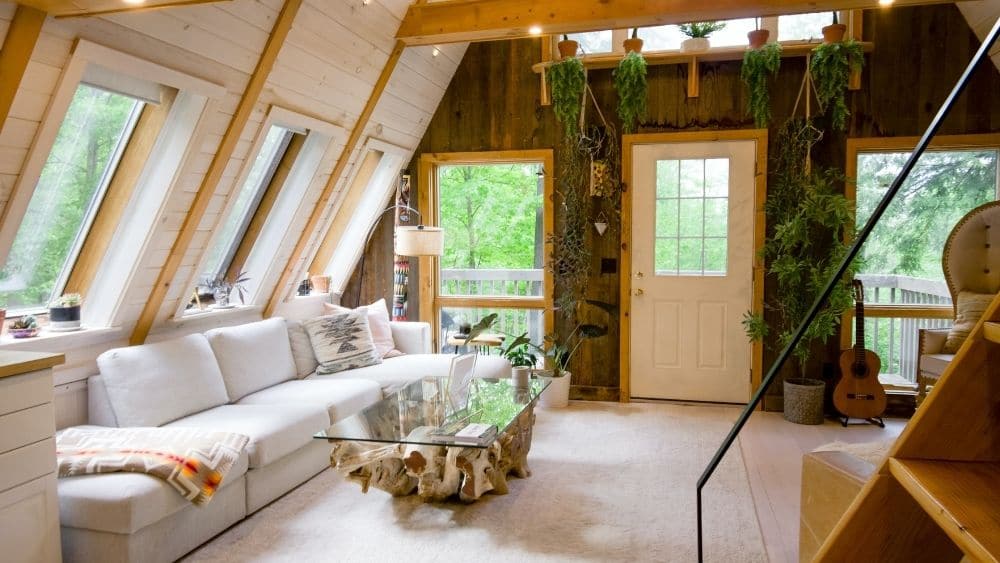
Seeing your tiny home come together—from blueprints and breaking ground to installation and design—is exhilarating. But how safe is your new tiny home from natural disasters?
It might not be top of mind right now—especially if you live in a county with a low risk of hurricanes or tornadoes—but if one occurs, the ensuing damages can be just as much as a larger-sized space. While you can’t control the weather, you can do your best to plan ahead and prepare for tiny living in any circumstance.
After all, when building your tiny home, you invest all your time sourcing and designing to then spend time making preparations to make sure it’s super safe. Still, the risks of natural disasters can seem alarming. If you live in an area prone to seasonal tropical storms, hurricanes, earthquakes, fires, or even blackouts, investing in protection is a must.
So, how exactly can you protect your tiny home from natural disasters? Scroll on to learn everything you need to know—including risks and tips on best safety practices.
Tiny Home Risks
Any home in any state is exposed to risk due to weather. There’s no way around it—but there are measures you can take to make it safe and secure.
Since every home has some element of risk or weakness—take note of any possible spots or areas that are most likely to take a hit by say, a hurricane or a fire. Areas of risk? Windows, loose materials (think latches, boards, shingles), cracks, or space (aka, under doors) where the elements or contamination can get inside. Another overarching factor to note? Parts of the house that need repairs are doubly at risk—like a leaking roof or a wooden deck that’s been affected by weather or salt.
How to Proactively Protect Your Tiny Home
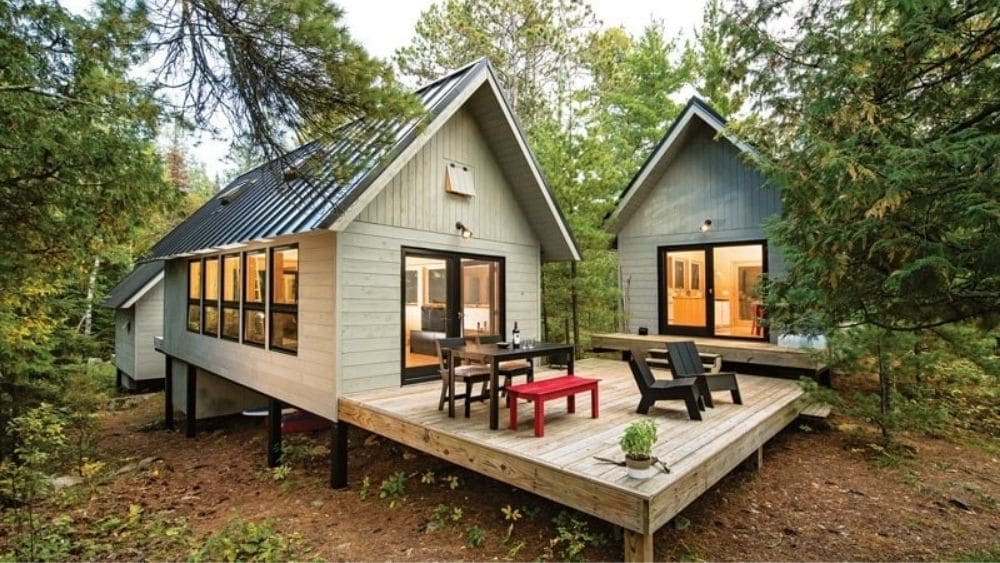
Already settled in your space? There are easy, everyday measures you can take to proactively protect your abode.
First, invest in a robust insurance plan or update your policy to encompass all different types of natural disasters that could potentially damage your home. Then, routinely check for leaks and cracks to get ahead of problems. Third, regular gutter cleanings can also ensure fewer obstacles in the future. Finally, anchor any fuel tanks and board windows and doors if you’re bracing for a natural event.
Going the extra mile to protect your home will save you a lot of time, and headaches in the long run.
But there are even more steps you can take to raise safety and security to new heights. Read on to learn more.
How to Protect Your Home from Earthquakes
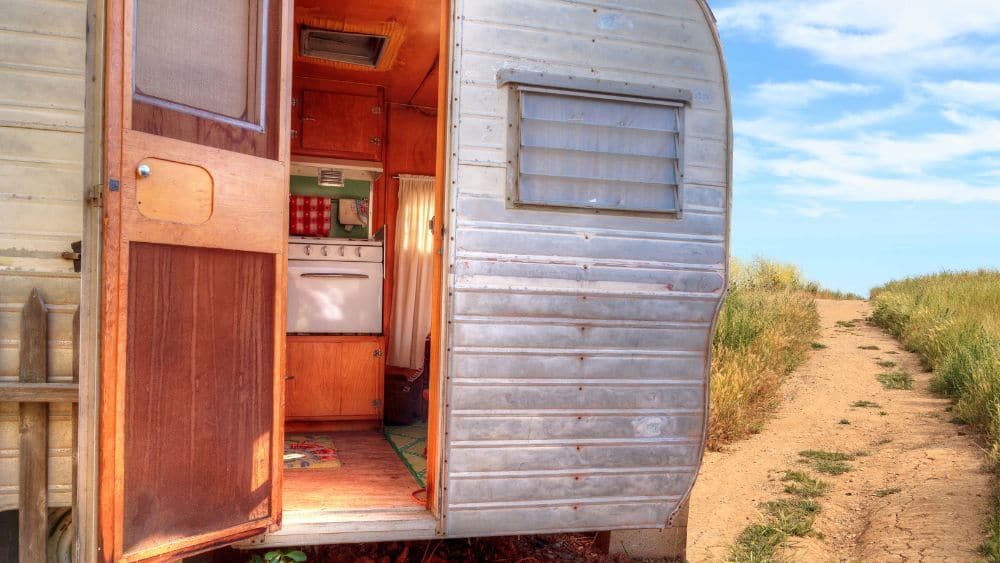
Earthquakes can happen nationwide, but California experiences some of the most devastating and hazardous quakes. But that’s not going to stop you—or another homeowner—from planting down roots in the Golden State.
To begin, look up your state’s guidelines on how to prepare for earthquakes and apply those standards to your home. This means you’ll want to assess your lot and remove any threatening, leaning trees. From there, you’ll need a foundation anchored with sill plates and walls with steel frames for the utmost stability. Pro tip: Hire a contractor or builder to install rounded windows, as they prevent cracks and chips.
Anchoring isn’t just for foundations, either. Heavy duty appliances like a stainless steel fridge should be anchored, even if it is half-size for a tiny home. Wall art, flat screen TVs, and other fixtures can be attached securely to prevent too much movement.
How to Protect Your Home from Floods
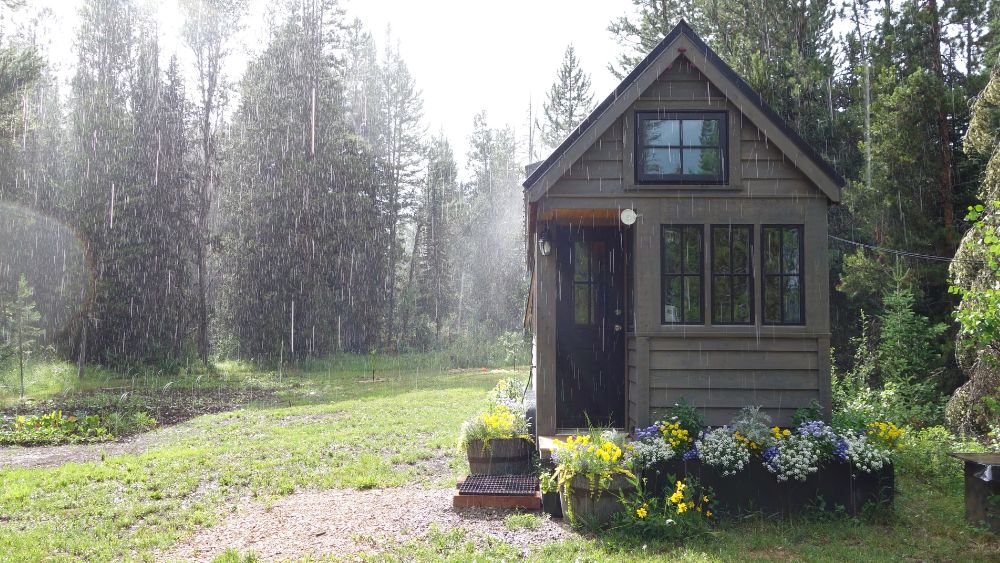
Most people will experience flooding in their lifetime, as it’s the most common natural disaster.
Before you even build your tiny home, carefully examine your lot. Is it situated on a flood plain? Building a home away from a flood plain means a lower monthly insurance premium and protection from flooding itself. What will you want to look for? Land with a higher elevation—as it’ll decrease the chances of a damaging flood.
Other key items to install? Drainage systems, and make sure it’s properly graded to drain water away from the house. If your home is on the coast or near water, you should have a slightly elevated foundation or a home built on stilts, to further ensure less damage from floods.
Also, have routine maintenance performed to clean gutters and drains to ensure that water (or debris) won’t wreak major havoc.
How to Protect Your Home from Ice and Hail

Ice and hail are temporary acts of weather, but they can have lasting effects. To start, have your builder install a hail-resistant roof—and consider asphalt shingles, metal, slate, or tile roofs for their strength and durability.
A hail-resistant roof can save you money in the long run as it is damage-resistant. Additionally, this material is a great protector against strong winds, too.
A roof is also only as strong as its walls—so make sure you have steel frames. And storm shutters will fortify windows (and walls) against ice and hail.
How to Protect Your Home from Hurricane Damage
Hurricanes can whip up lots of damage: menacing high winds, heavy rain, flooding, and even hail. Heavy winds can cause a storm surge, which creates more chaos, as debris can literally pull materials apart or knock them flat.
Like ice and hail prevention, a must-have for all homes is short shutters. And, if you do live in a flood zone (that’s especially prone to hurricanes), make sure to always play it safe: Evacuate prior to impact.
How to Protect Your Home from Tornados
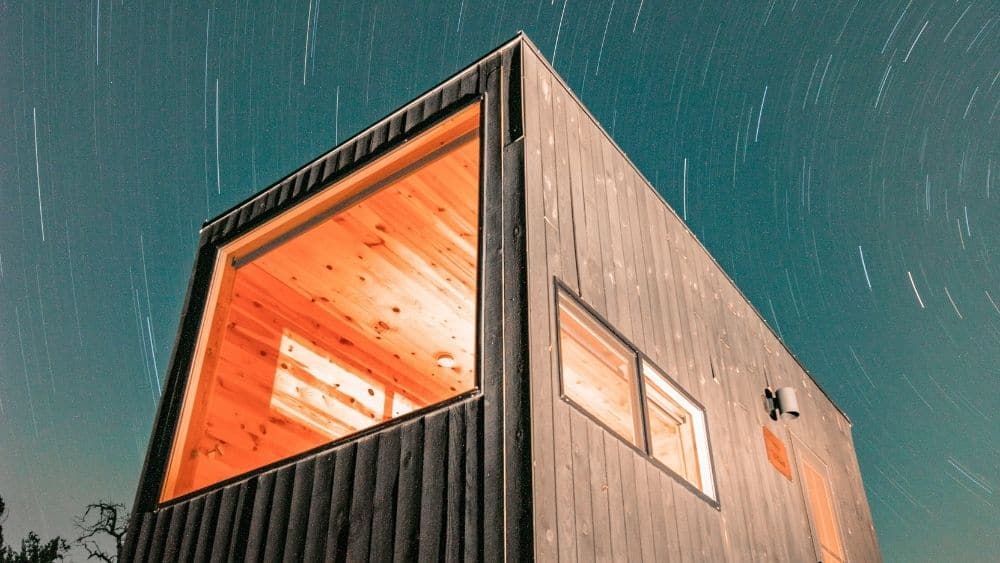
Tornados can create some of the most terrifying damage. While a home can’t be 100 percent tornado-proof, there are proactive measures to minimize future damage. Brace all doors, including the garage, and swap out windows for impact-resistant models. Another safety tip? Anchor the front door to the foundation.
How to Protect Your Home from Wildfires
Like many other natural disasters, wildfires can be especially unpredictable—and devastating. And much like tornadoes, it’s impossible to prevent wildfire damage completely.
But, if you live in a fire-prone area, there are tactics you can employ. You’ll want to build on a lot that has little to no vegetation and undergrowth—this type of green life can be easily susceptible to wildfires.
Then, limit the number of flammable materials around your home’s exterior. Consider using tile and steel (especially for roofing) and opt for stucco siding or cement to further mitigate or stave off fire damage.
